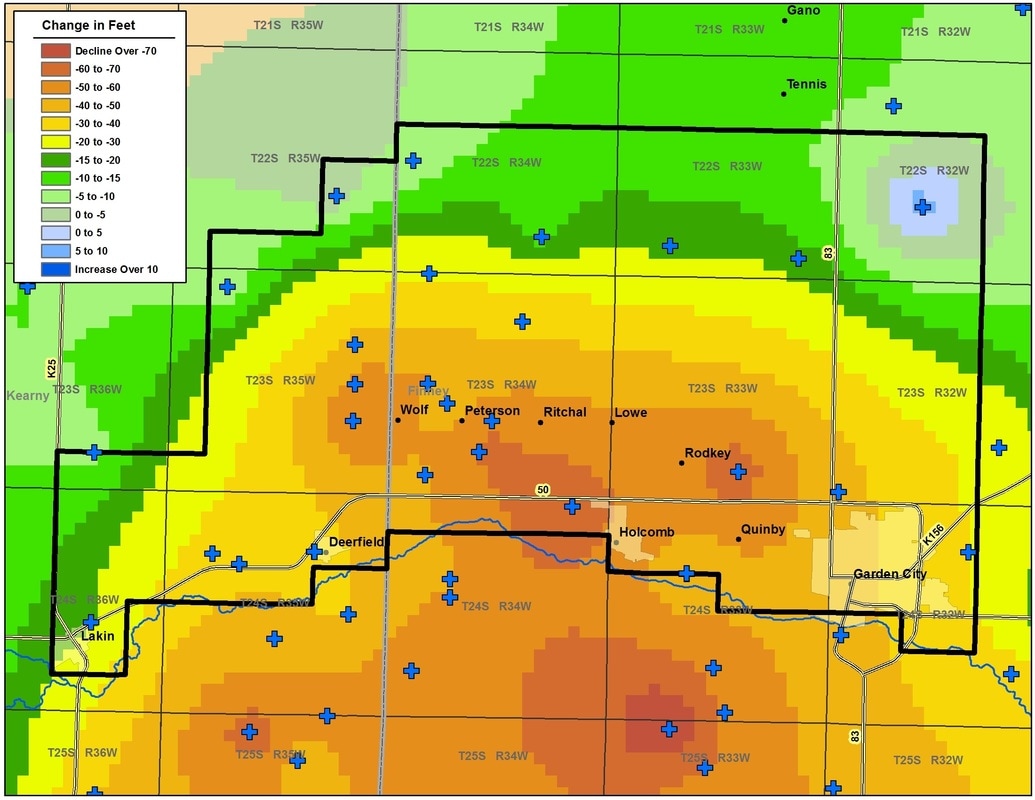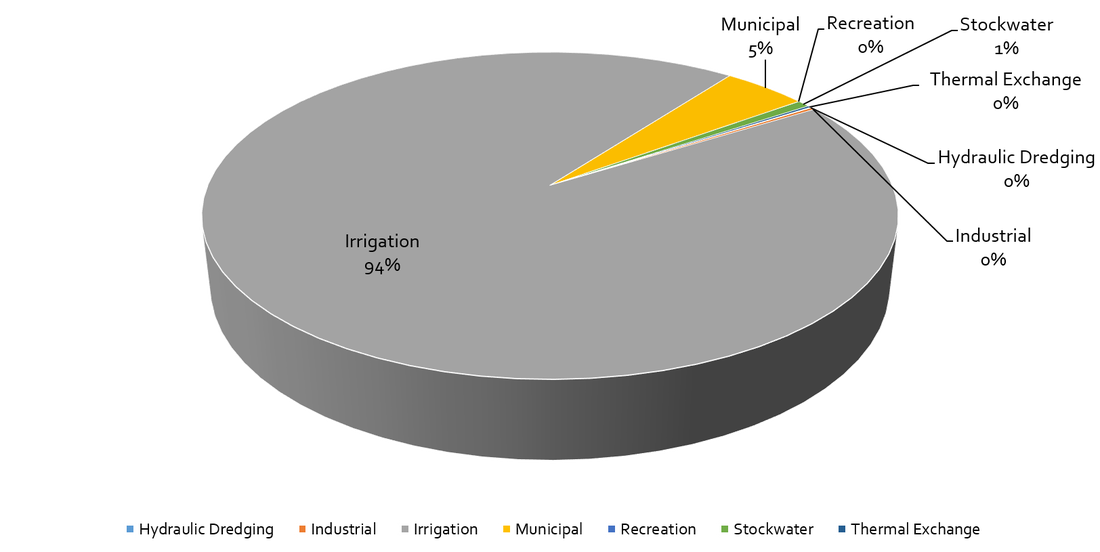Why is a LEMA being considered for Northern Finney and Kearny counties?
Local water right owners in northern Finney and Kearny counties are seeking ways to reduce the rate of decline in the Ogallala aquifer in this region. Some areas of this region have seen declines of more than 70 feet in the water table in the past ten years. Reducing water use through a LEMA is one tool for extending the usable lifetime of the aquifer. By reviewing past water use and the impact on the aquifer, data shows that a 15% reduction in use will significantly extend the life of the aquifer in this area.
What is being proposed?
Several alternatives have been evaluated to address the groundwater declines. The list of alternatives has been narrowed to three options. Each option: achieves the goal of an 11 percent overall reduction in irrigation water use; preserves the base water right annual authorized quantity; adds a 5-year allocation limit for a 5-year LEMA period; does not permanently alter the water right, and applies only to appropriated irrigation groundwater rights.
The three options for calculating a conservation allocation are:
Option #1 - Limit water allocation to 85 percent of recent historical average annual water use (2006-2015).
Option #2 - Limit water allocation to 90 percent of recent historical average annual water use (2006-2015), or limit water allocation to 58 percent of base water right annual authorized quantity, whichever is less.
Option #3 - Limit all water allocations to 50 percent of their base water right annual authorized quantity.
The three options for calculating a conservation allocation are:
Option #1 - Limit water allocation to 85 percent of recent historical average annual water use (2006-2015).
Option #2 - Limit water allocation to 90 percent of recent historical average annual water use (2006-2015), or limit water allocation to 58 percent of base water right annual authorized quantity, whichever is less.
Option #3 - Limit all water allocations to 50 percent of their base water right annual authorized quantity.
What About Vested Rights?
A vested right is the claim to continue use of water having been applied for on or before June 28, 1945. Any water right applied for after this date is considered an appropriated right. There are 137 active vested water rights within the proposed LEMA boundary, comprising about 24% of the total average water use. Pursuant to K.S.A. 82a-703 vested water rights will cannot be compelled to reduce their water use, but may participate voluntarily to benefit from the LEMA flexibilities.
Will other uses, non-irrigation uses be restricted?
Irrigation makes up 94% of the reported water use within the proposed LEMA boundaries and therefore provides the greatest opportunity for conservation. Other non-irrigation uses such as stockwatering, municipal, industrial, and recreation will be encouraged to conform to written conservation plans and voluntarily reduce water use where feasible.
Will any credit be given for those who have already been voluntarily conserving?
Yes. By law, LEMAs must give due consideration for past voluntary conservation. A LEMA advisory committee and the GMD#3 board will consider years of non-use and other voluntary conservation activities such as enrollment in the Environmental Quality Incentives Program (EQIP) and Water Right Conservation Area Program (WRCP), as well as, site specific information such as recent conversion to more efficient irrigation systems when determining the LEMA allocations.
When will this proposed LEMA take effect?
The goal is to have the proposed LEMA in place by 2019.
View and download a summary of the proposal below:
| kflinformationalsheet.pdf | |
| File Size: | 849 kb |
| File Type: | |


